Shrubs – Have you tried these?
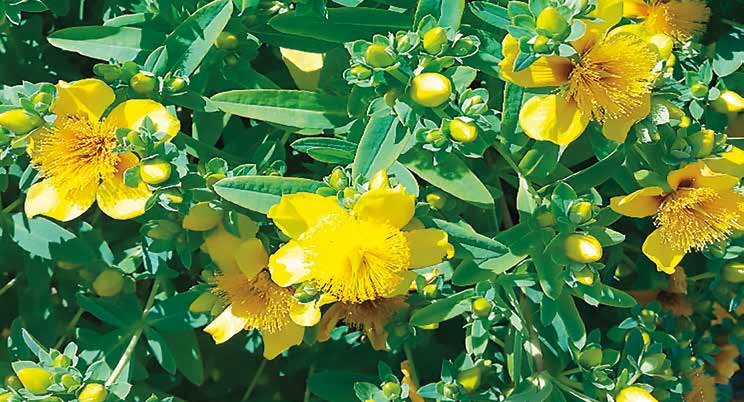
Looking for something new? Want a subtle pop of color or texture contrast in the landscape? Here are three of our newer diverse favorites displaying a variety of attributes from drought or deer resistance, beneficial insect attractants, delicate fragrance to fall color.
Hypericum kalmianum ‘Blue Velvet’ (cv ‘CCFLPC-1’)
This shrub was selected by renowned plantsman, Dr. Paul Cappiello of Yewdell Gardens in Kentucky. It is a compact, mounding shrub displaying disease free, blue foliage. Gold flowers complement the foliage mid-summer. Plant as a specimen, a small hedge or in a mass planting. Low maintenance, drought and urban pollution tolerant. Grows well from Chicago to Georgia. This low maintenance shrub adds a wonderful texture to any garden and bees love it! 2012 Theodore Klein Plant Award Winner.
Zone: 5-9 Height: 3’ x Spread: 2’
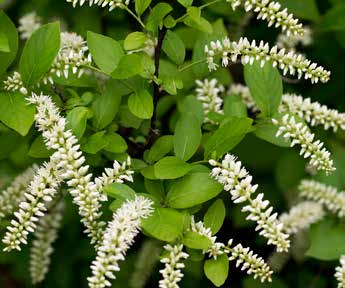
Itea Scarlet Beauty 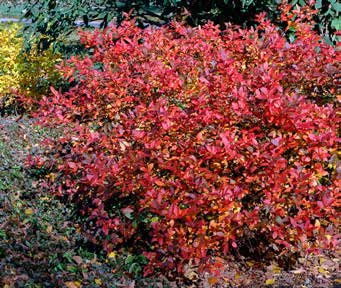
Scarlet Beauty Fall Color
Itea virginiana ‘Scarlet Beauty’ (cv ‘Morton’)
A beautiful, hardy selection of Sweetspire. Tolerates alkaline soils better than other Sweetspire and thus tends to display a deeper green foliage. White 3” racemes are produced from mid-June to early July. Flowers have a faint but pleasing fragrance attractive to butterflies. Deep orange-red fall foliage peaks in early November and persists through a hard frost. Introduced by the Morton Arboretum.
Zone: 4-9 Height & Spread: 3-4’
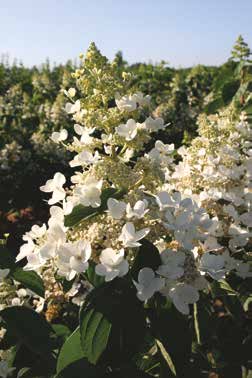
Hydrangea Sweet Summer 
Maturing flowers
Hydrangea paniculata ‘Sweet Summer’ (cv ‘Bokrathirteen’)
How to describe this plant…Beauty and a Beast. It is cold hardy, and about 2/3 the size of Limelight. The flowers start with a hint of green, then turn pure white, transitioning to pink. This shrub does not melt in the heat. It has sturdy stems and is a prolific bloomer making it a great candidate for cut flowers.
And we have many more favorites too numerous to list here. See our website and availability listing at for other great shrubs including, Syringa x ‘Josee’, Rosa ‘Navy Lady’, Parrotia persica ‘Ruby Vase’, Syringa vulgaris ‘Tiny Dancer’ and Hydrangea macrophylla ‘Wedding Gown’.
TSUNAMI
Maintaining a healthy plant in storage is essential for arrival of wholesome plants to the customer. Common plant health practices include removal of broken stems and roots, keeping free moisture balanced and maintaining adequate air circulation. Included in the prescription is the option to wash roots and stems.
Plants arrive to the warehouse from the field and are then inspected to determine whether washing is necessary or not. Washing the mud from the plants not only improves plant health, but also makes handling the plants more manageable by reducing the weight. Reduced weight lessens employee fatigue and injury. Additionally, the reduced weight keeps plants from breaking, as they are stacked. International shipments often require a clean plant too as many countries want plants “free of soil”.
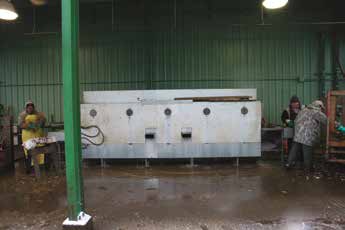
Tsunami 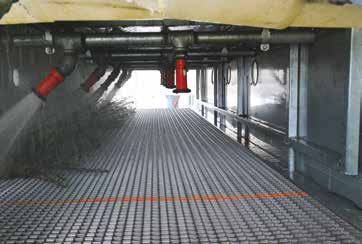
Rotating nozzles 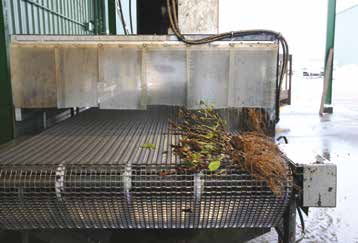
Washed plants
Washing plants is laborious and careful attention is required not to jeopardize the integrity of the plant. Our initial efforts to wash plants simply utilized a hose draped over the shoulder of an employee. Often this
method presented employee fatigue. Progression of the washing procedure improved with metal wash racks and hoses hung on a trolley system. All improvements are placed undercover with sufficient lighting and improve winterization capabilities. The improvments provided balance while giving the employee an opportunity to improve productivity.
Seeking continued progression in the plant washing system the nursery established a focus group. The group met on many occasions often traveling to other companies to cultivate ideas on an automated wash system. After months of planning, design and fabrication the nursery introduced the Tsunami to increase efficiencies as well as improved control for the amount of variable washing required for plant health, weight or international shipment. The wash system incorporates a speed-controlled conveyor and adjustable, oscillating nozzles positioned above and below the plant zone to effectively clean plants.
The plant washing process still incorporates a combination of the methods mentioned for practical reasons though our diligence to provide quality plants is always paramount.
Hedgerows – Beautiful and Functional

A few years ago, we cleaned a property line full of brambles, barbed wire and debris and made it into an attractive functioning hedgerow. The goal is to enhance wildlife in addition to serving as a property barrier to reducethe effects of dust and wind. The wire, debris, old stumps and plant material were removed. We amended the soil with compost and planted the area with trees from our inventory and a few purchased natives. The first year we kept it weed free and well watered. As it matures, it will maintain itself, requiring little or no irrigation and will shade out weeds. We water and weed for a nicer appearance.
Raptor poles were installed to attract rodent predators such as hawks and owls. Berries, nuts and seeds draw in other birds (pheasant and quail) along with wildlife and provide good hiding places in the low growing plants.
Hedgerows can also conserve water, reduce soil erosion and even provide farm income if certain plants are selected for collection of seeds, fruit, herbs, flowers, willow branches or wood products. In the fall, it offers beautiful autumn color and the evergreens stand out through the winter until the next spring.
Summer 2017 Interns
Sharing knowledge with others is an important part of the company’s mission statement. Educating the next generation who aspire to careers in the green industry is the driving force behind the internship program. Over the years, Carlton Plants has hosted many students from the U.S. and abroad.
We are pleased to introduce you to the summer 2017 interns:
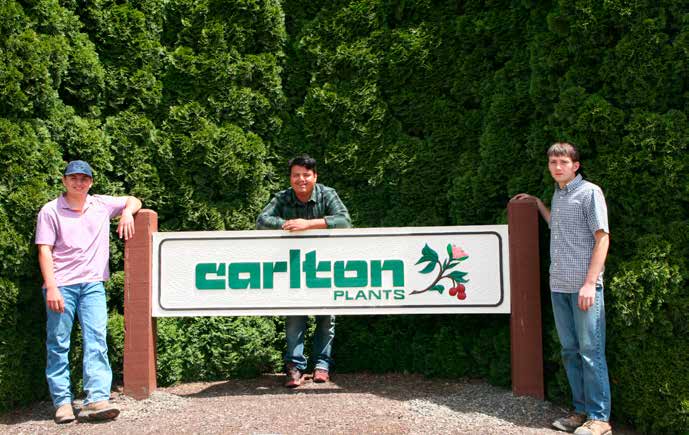
Connor Bunovsky is a sophomore at the University of Connecticut majoring in agriculture and resource economics, with an ornamental horticulture minor. Connor grew up in the family nursery business in Monroe, Connecticut. When he returns to school in the fall, Connor plans to focus on the business aspect of the profession.
Rito Medina will complete his degree in plant science this fall at Fresno State University, California. In past summers he interned at Gallo Winery and worked in cherry and apple harvests in Washington State. Following graduation, Rito plans to pursue a master’s program in plant physiology. Some day he would like to own a nursery.
Carson Seefeldt will graduate this winter with a major in horticulture from Chemeketa Community College, Salem, Oregon. Last summer he worked on a family farm north of Salem operating a mechanical blueberry harvester. He also counted and identified insects in traps set in the apple and blueberry crops. Carson hopes to gain new skills and experience in ornamental horticulture during his internship.